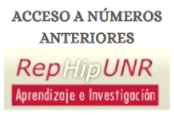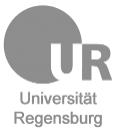On interpreting ancient Egyptian funerary texts
DOI:
https://doi.org/10.35305/cl.vi19.48Palavras-chave:
Ancient Egyptian Religion, Mortuary Cult, Afterlife, Funerary Texts, RitualResumo
Ancient Egyptian funerary texts have traditionally been read as providing detailed, literal descriptions of afterlife beliefs, but various aspects of this view have begun to be questioned in recent research. The present article reviews such contributions in contrast to the classical view of funerary texts as established by Kurt Sethe (1931), arguing that it is possible in several respects to extend their stances and conclusions. The resulting view is one in which the very notion of “funerary texts” as a text genre sui generis is questioned, along with the defining feature that such texts contain literal descriptions of a transcendent, personal afterlife. Instead, it is suggested with reference to both Egyptological and interdisciplinary ideas that funerary texts can fruitfully be viewed as sharing their structure and function with other ancient Egyptian ritual texts. In questioning the intuitive reading of the texts as descriptions of the afterlife, such an approach opens up new interpretive possibilities of relevance both within Egyptology and in cross-cultural comparison.
Downloads
Referências
Altenmüller, Hartwig (1972) Die Texte zum Begräbnisritual in den Pyramiden des Alten Reiches. Wiesbaden: Harrassowitz.
Assmann, Jan (2005) Death and salvation in ancient Egypt. Ithaca/London: Cornell University Press.
Assmann, Jan, and Kucharek, Andrea (2008) Ägyptische Religion: Totenliteratur. Frankfurt a.M.: Verlag der Weltreligionen.
Barta, Winfried (1968) Aufbau und Bedeutung der altägyptischen Opferformel. Glückstadt: J.J. Augustin.
Champollion, Jean-François (1833) Lettres écrites d'Égypte et de Nubie, en 1828 et 1829. Paris: Firmin Didot Frères.
Depuydt, Leo (2000) Review of Krauss, Astronomische Konzepte und Jenseitsvorstellungen in den Pyramidentexten, Bibliotheca Orientalis 57 (1): 81–86.
Erman, Adolf (1885) Aegypten und aegyptisches Leben im Altertum. Tübingen: Verlag der Laupp'schen Buchhandlung.
Erman, Adolf (1905) Die ägyptische Religion. Berlin: Reimer.
Federn, Walter (1960) “The ‘transformations’ in the Coffin Texts. A new approach”, Journal of Near Eastern Studies 19 (4): 241–257.
Fitzenreiter, Martin (2008) “Jenseits im Diesseits. Die Konstruktion des Ortes der Toten im pharaonischen Ägypten”, in: Kümmel, Ch.; Schweizer, B. and Veit, U. (eds.), Körperinszenierung - Objektsammlung - Monumnetalisierung. Totenritual und Grabkult in frühen Gesellschaften. Münster/New York/Munich/Berlin: Waxmann, pp. 75-106.
Gee, John (2006) “The use of the daily temple liturgy in the Book of the Dead”, in: Backes, B., Munro, I. and Stöhr, S. (eds.) Totenbuch-Forschungen. Gesammelte Beiträge des 2. Internationalen Totenbuch-Symposiums 2005. Wiesbaden: Harrassowitz, pp. 73-86.
Goebs, Katja (2008) Crowns in Egyptian funerary literature. Royalty, rebirth, and destruction. Oxford: Griffith Institute.
Goebs, Katja (2019) “How ‘royal’ (and ‘mythical’) are the Coffin Texts? Reflections on the definition and function of some etic concepts in a Middle Kingdom funerary text corpus”, in: Nyord, R. (ed.), Concepts in Middle Kingdom Funerary Culture. Proceedings of the Lady Wallis Budge Anniversary Sympoisum Held at Christ's College, Cambridge, 22 January 2016, . Leiden: Brill, pp. 63–99.
Hays, Harold M. (2012) The organization of the Pyramid Texts. Typology and disposition. Vol. 31.Probleme der Ägyptologie. Leiden - Boston: Brill.
Holbraad, Martin (2012) Truth in motion. The recursive anthropology of of Cuban divination. Chicago and London: University of Chicago Press.
Holbraad, Martin (2020) “The Shapes of Relations: Anthropology as Conceptual Morphology.” Philosophy of the Social Sciences: 1-28. Available https://doi.org/10.1177/0048393120917917. https://doi.org/10.1177/0048393120917917.
Junker, Herman (1940) ”Der Tanz der Mww und das Butische Begräbnis im Alten Reich.” Mitteilungen des Deutschen Archäologischen Instituts Abteilung Kairo 9: 1–39.
Krauss, Rolf (1997) Astronomische Konzepte und Jenzeitsvorstellungen in den Pyramidentexten. Wiesbaden: Harrassowitz.
Lepsius, Richard (1842) Das Todtenbuch der Ägypter nach dem hieroglyphischen Papyrus in Turin. Leipzig: Georg Wigand.
Lieven, Alexandra von (2012) “Book of the Dead, Book of the Living. BD as temple texts.” Journal of Egyptian Archaeology 98: 249-267.
Lieven, Alexandra von (2017) “Originally non-funerary spells from the Coffin Texts. The example of CT spell 38”, in: Bickel, S. and D´ıaz-Iglesias, L. (eds.), Studies in ancient Egyptian funerary literature, Orientalia Lovaniensia Analecta. Leuven: Peeters, pp. 345-354
Lieven, Alexandra von (2019) “How ‘funerary’ are the Coffin Texts?”, in: Nyord, R. (ed.) Concepts in Middle Kingdom funerary culture. Proceedings of the Lady Wallis Budge Anniversary Symposium held at Christ's College, Cambridge, 22 January 2016. Leiden - Boston: Brill, pp. 100-116.
Nyord, Rune (2015) “Scribes of the gods in the Coffin Texts”, in: Miniaci, G. and Grajetzki, W. (eds.), The world of Middle Kingdom Egypt (2000-1550 BCE). Contributions on archaeology, art, religion, and written sources I, . London: Golden House, pp. 273–307.
Nyord, Rune (2018a) “Death before time. Mythical time in ancient Egyptian mortuary religion”, in: Seebach, S. and Willerslev, R. ( Mirrors of passing. Unlocking the mysteries of death, materiality, and time. New York and Oxford: Berghahn, pp. 57–73.
Nyord, Rune (2018b) “‘Taking ancient Egyptian mortuary religion seriously’: Why would we, and how could we?” Journal of Ancient Egyptian Interconnections 17: 73–87.
Nyord, Rune (Forthcoming) “Motile mythologies: (Re)constituting ancient Egyptian ritual knowledge in the early 2nd millennium BCE”, in: Pissis, N.; Schmidt, N. and Uhlmann, Gyburg (eds.), Wissensoikonomien. Transgression and Order in Premodern Cultures, Wiesbaden: Harrassowitz, pp. 199–210.
Podemann Sørensen, Jørgen (1993) “Ritualistics. A new discipline in the history of religions.” Scripta Instituti Donneriani Aboensis 15: 9–25.
Podemann Sørensen, Jørgen (2006) “Efficacy”, in: Kreinath, J.; Snoek, J. and Stausberg, M. (eds.), Theorizing rituals. Issues, topics, approaches, concepts, Leiden -Boston: Brill, pp. 523–531.
Quack, Joachim Friedrich (1992) Studien zur Lehre für Merikare. Wiesbaden: Harrasowitz.Quack, Joachim Friedrich (2006) “Review of B. Backes, Das atlägyptische ‘Zweiwegebuch’”, Journal of the American Oriental Society 126 (4): 594–596.
Regulski, Ilona (2020) Repurposing ritual. Pap. Berlin P. 10480-82: A case study from Middle Kingdom Asyut. Berlin-Boston: De Gruyter.
Sethe, Kurt (1931) “Die Totenliteratur der alten Ägypter: Die Geschichte einer Sitte.” Sitzungsberichten der Preussischen Akademie der Wissenschaften, Phil.-Hist. Klasse 18: 520–541.
Settgast, Jürgen (1963) Untersuchungen zu altägyptischen Bestattungsdarstellungen. Glückstadt –Hamburg - New York: J.J. Augustin.
Smith, Mark (2014) “Osiris and the deceased in ancient Egypt. Perspectives from four millennia.” Annuaire de l'École pratique des hautes études, Section des sciences religieuses 121: 87–101.
Smith, Mark (2017) Following Osiris. Perspectives on the Osirian afterlife through the millennia. Oxford: Oxford University Press.
Wente, Edward (1982) “Mysticism in pharaonic Egypt?” Journal of Near Eastern Studies 41 (3): 161–179.
Willems, Harco (1996) The coffin of Heqata (Cairo JdE 36418). A case study of Egyptian funerary culture of the early Middle Kingdom. Vol. 70 Orientalia Lovaniensia Analecta. Leuven: Peeters.
Willems, Harco (1997) “The embalmer embalmed. Remarks on the meaning of the decoration of some Middle Kingdom coffins.” In Essays on ancient Egypt in honour of Herman te Velde, edited by Jacobus van Dijk, 342–372. Groningen: Styx.
Willems, Harco (2017) “The method of ‘sequencing’ in analyzing Egyptian funerary texts. The example of Coffin Texts Spells 283 and 296”, in: Bickel, S. and D´ıaz-Iglesias, L. (eds.), Studies in ancient Egyptian funerary literatura. Leuven/Paris/Bristol, CT: Peeters, pp. 599–619.
Willems, Harco (2019) “Who am I? An emic approach to the so-called ‘personal texts’ in Egyptian funerary literature”, in: Nyord, R. (ed.), Concepts in Middle Kingdom funerary culture. Proceedings of the Lady Wallis Budge Anniversary Symposium held at Christ’s College, Cambridge, 22 January 2016, Leiden and Boston: Brill, pp. 204–247.
Yamazaki, Naoko (2003) Zaubersprüche für Mutter und Kind. Papyrus Berlin 3027. Berlin: Achet.
Downloads
Publicado
Como Citar
Edição
Seção
Licença

Este trabalho está licenciado sob uma licença Creative Commons Attribution-NoDerivatives 4.0 International License.

















 Centro de Estudios sobre Diversidad Cultural
Centro de Estudios sobre Diversidad Cultural

